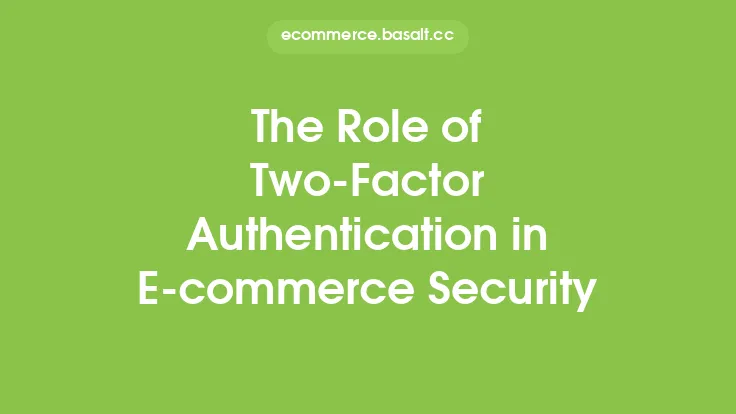The world of e-commerce has undergone significant transformations over the years, driven by advances in technology and changing consumer behaviors. One key aspect that has played a crucial role in shaping the e-commerce landscape is the emergence of innovative payment methods. These new payment solutions have not only enhanced the online shopping experience but have also opened up new avenues for businesses to reach a wider audience and increase their revenue streams.
Introduction to Innovative Payment Methods
Innovative payment methods refer to the various digital payment solutions that have been developed to facilitate online transactions. These methods have evolved significantly over the years, from traditional credit and debit card payments to more modern solutions such as mobile payments, digital wallets, and cryptocurrencies. The rise of these innovative payment methods has been driven by the need for faster, more secure, and more convenient payment options that cater to the diverse needs of online shoppers.
Types of Innovative Payment Methods
There are several types of innovative payment methods that are currently being used in e-commerce. These include:
- Mobile payments: Mobile payments involve using a mobile device to make payments online or in-store. This can be done through mobile payment apps such as Apple Pay, Google Pay, or Samsung Pay.
- Digital wallets: Digital wallets are online services that allow users to store their payment information, such as credit or debit card details, and make payments online or in-store.
- Cryptocurrencies: Cryptocurrencies are digital currencies that use cryptography for secure financial transactions. Bitcoin is one of the most well-known cryptocurrencies.
- Contactless payments: Contactless payments involve using a credit or debit card, or a mobile device, to make payments by tapping it on a payment terminal.
- Buy now, pay later (BNPL) services: BNPL services allow consumers to make purchases online and pay for them at a later date, often with no interest or fees.
Benefits of Innovative Payment Methods
Innovative payment methods offer several benefits to both consumers and businesses. For consumers, these benefits include:
- Convenience: Innovative payment methods are often faster and more convenient than traditional payment methods.
- Security: Many innovative payment methods offer enhanced security features, such as tokenization and encryption, to protect sensitive payment information.
- Flexibility: Innovative payment methods provide consumers with more flexibility in terms of how they make payments, allowing them to choose the method that best suits their needs.
For businesses, the benefits of innovative payment methods include:
- Increased conversions: By offering a range of payment options, businesses can increase conversions and reduce cart abandonment rates.
- Reduced friction: Innovative payment methods can reduce friction in the checkout process, making it easier for consumers to complete their purchases.
- Access to new markets: Innovative payment methods can provide businesses with access to new markets and customer segments, particularly in regions where traditional payment methods may not be widely available.
Challenges and Limitations of Innovative Payment Methods
While innovative payment methods offer several benefits, there are also challenges and limitations that need to be considered. These include:
- Security risks: Despite the enhanced security features of many innovative payment methods, there is still a risk of security breaches and fraud.
- Interoperability issues: Different payment methods may not be compatible with all devices or platforms, which can create interoperability issues.
- Regulatory challenges: The regulatory environment for innovative payment methods is still evolving and can be complex, which can create challenges for businesses that want to adopt these methods.
Future of Innovative Payment Methods
The future of innovative payment methods looks promising, with new technologies and solutions emerging all the time. Some of the trends that are expected to shape the future of payments include:
- Increased use of biometric authentication: Biometric authentication, such as facial recognition and fingerprint scanning, is expected to become more widespread in the payments industry.
- Growth of cryptocurrencies: Cryptocurrencies are expected to continue to grow in popularity, particularly as more businesses begin to accept them as a form of payment.
- Rise of decentralized finance (DeFi): DeFi refers to the use of blockchain technology to create decentralized financial systems. This is expected to have a significant impact on the payments industry in the future.
Best Practices for Implementing Innovative Payment Methods
For businesses that want to implement innovative payment methods, there are several best practices that should be followed. These include:
- Conducting thorough research: Businesses should conduct thorough research to determine which payment methods are most popular with their target audience.
- Ensuring security: Businesses should ensure that their payment systems are secure and compliant with relevant regulations.
- Providing a seamless user experience: Businesses should prioritize providing a seamless user experience, with easy-to-use payment interfaces and minimal friction in the checkout process.
- Monitoring and evaluating performance: Businesses should continuously monitor and evaluate the performance of their payment methods, making adjustments as needed to optimize results.





